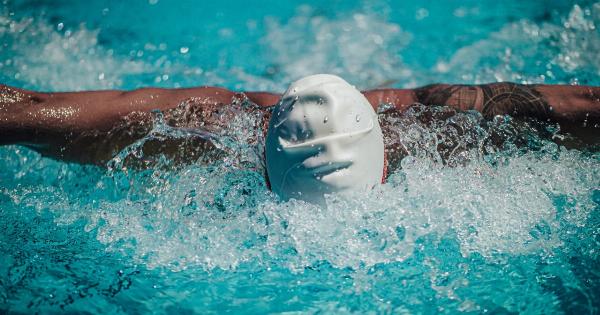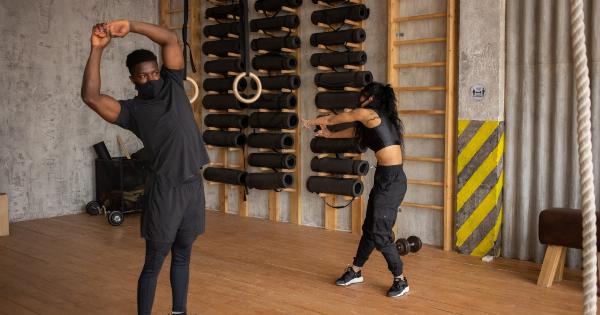Vaginal fibrillation, also known as pelvic organ prolapse, is a condition in which the pelvic organs shift from their natural position, causing discomfort and pain to the patient.
While it is not known to be a direct cause of stroke, it has been linked to certain physical activities, including exercising.
In this article, we will explore how exercise can worsen vaginal fibrillation and whether it can increase the risk of stroke.
What is Vaginal Fibrillation?
Vaginal fibrillation occurs when the muscles and tissues that support the pelvic organs weaken or stretch, resulting in a prolapse or descent of one or more of the organs.
It is more common after menopause or childbirth, but can also develop due to chronic constipation, heavy lifting, and other factors that strain the pelvic area.
The symptoms of vaginal fibrillation include:.
- A feeling of heaviness or pressure in the pelvis
- A protrusion of tissue from the vagina
- Difficulty urinating or having a bowel movement
- Pain or discomfort during sex
Treatment for vaginal fibrillation may include pelvic floor exercises, hormone therapy, or surgery, depending on the severity of the prolapse and the patient’s overall health.
How Does Exercise Affect Vaginal Fibrillation?
While exercise is beneficial for overall health and well-being, it can worsen vaginal fibrillation symptoms and increase the risk of organ prolapse.
This is because many types of exercise involve high-impact movements, such as jumping, running, or lifting weights, which put pressure on the pelvic floor muscles.
Repeatedly engaging in these types of exercise can cause the pelvic floor muscles to weaken and stretch, making it difficult to maintain the position of the pelvic organs.
This, in turn, can cause symptoms of vaginal fibrillation to worsen or become more pronounced.
However, this doesn’t mean that exercise is off-limits for women with vaginal fibrillation. Rather, it should be approached with caution and modified to reduce stress on the pelvic floor muscles.
What Types of Exercise Are Safe for Women with Vaginal Fibrillation?
If you’ve been diagnosed with vaginal fibrillation, it’s important to talk to your doctor or a physical therapist about which types of exercise are safe for you to do.
Generally, low-impact exercises that don’t put excessive pressure on the pelvic floor muscles are safe for women with vaginal fibrillation. Some examples include:.
- Walking
- Biking
- Swimming
- Elliptical training
- Yoga and Pilates
These types of exercises can improve cardiovascular health, strengthen muscles, and help manage stress without exacerbating symptoms of vaginal fibrillation.
Can Exercise Increase the Risk of Stroke in Women with Vaginal Fibrillation?
While exercise is generally beneficial for reducing the risk of stroke, it may increase the risk in women with vaginal fibrillation. This is because vaginal fibrillation can interfere with blood flow to the brain, potentially leading to a stroke.
When the pelvic organs prolapse, they can put pressure on the blood vessels in the pelvis, reducing blood flow to the brain.
If a woman with vaginal fibrillation engages in exercise that further increases pressure on the pelvic area, the risk of stroke may increase.
Reducing the Risk of Stroke in Women with Vaginal Fibrillation
If you have vaginal fibrillation, it’s important to take steps to reduce your risk of stroke, particularly if you plan to engage in exercise. Some ways to do this include:.
- Talking to your doctor about your risk of stroke and any precautions you should take when exercising
- Limiting high-impact exercise that increases pressure on the pelvic floor muscles
- Strengthening the pelvic floor muscles through pelvic floor exercises or physical therapy
- Practicing stress-reducing techniques, such as meditation or deep breathing
- Maintaining healthy blood pressure and cholesterol levels
By taking these steps, women with vaginal fibrillation can reduce their risk of stroke and improve their overall health and well-being.
Conclusion
Vaginal fibrillation can be a source of discomfort and pain for many women, particularly those who engage in high-impact exercise.
While exercise is generally beneficial for overall health, it’s important to modify physical activity to reduce stress on the pelvic floor muscles and lower the risk of stroke.
If you have vaginal fibrillation, talk to your doctor or physical therapist about which types of exercise are safe for you to do.
By taking steps to reduce the risk of stroke and improve overall health, women with vaginal fibrillation can live happy, healthy lives.































